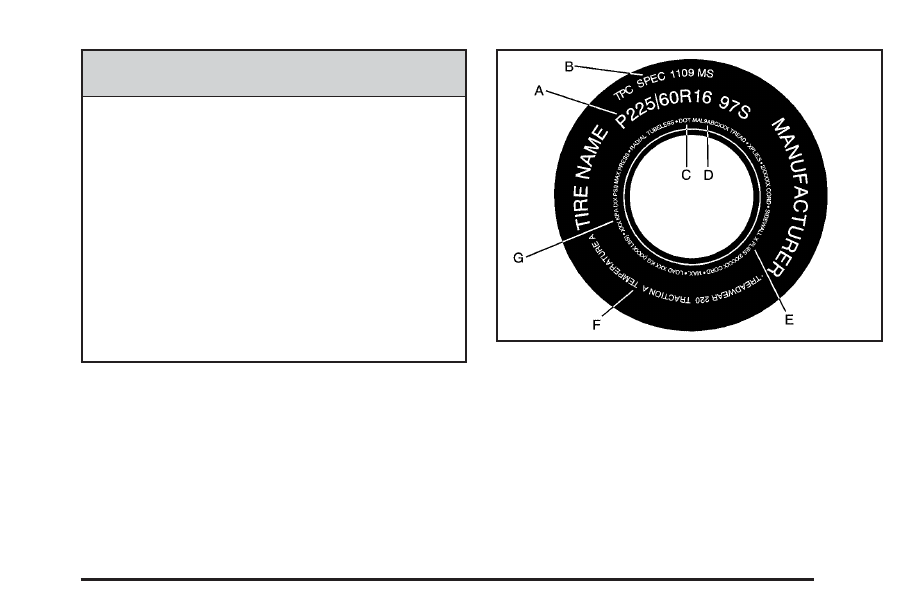Tire sidewall labeling, Tire sidewall labeling -45 – Saturn 2010 AURA User Manual
Page 315

WARNING:
(Continued)
Check all tires frequently to maintain the
recommended pressure. Tire pressure
should be checked when your vehicle’s
tires are cold. See Inflation - Tire
Pressure on page 6-51.
•
Overinflated tires are more likely to be
cut, punctured, or broken by a sudden
impact — such as when you hit a
pothole. Keep tires at the recommended
pressure.
•
Worn, old tires can cause accidents. If
the tire’s tread is badly worn, or if your
vehicle’s tires have been damaged,
replace them.
Tire Sidewall Labeling
Useful information about a tire is molded into its
sidewall. The examples below show a typical
passenger vehicle tire and a compact spare tire
sidewall.
(A) Tire Size
:
The tire size is a combination of
letters and numbers used to define a particular
tire’s width, height, aspect ratio, construction type,
and service description. See the “Tire Size”
illustration later in this section for more detail.
(B) TPC Spec (Tire Performance Criteria
Specification)
:
Original equipment tires designed
to GM’s specific tire performance criteria have
a TPC specification code molded onto the sidewall.
Passenger (P-Metric) Tire Example
6-45